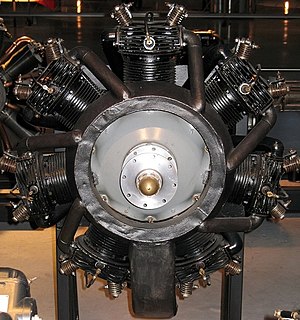
The Warner Scarab is an American seven-cylinder radial aircraft engine, that was manufactured by the Warner Aircraft Corporation of Detroit, Michigan in 1928 through to the early 1940s. In military service the engine was designated R-420.

The E-113 was a small flat-twin piston engine developed by Aeronca for use in some of their light aircraft. It was an overhead valve development of the flathead configuration E-107.

The Franklin O-150 was an American air-cooled aircraft engine of the late 1930s. The engine was of four-cylinder, horizontally-opposed layout and displaced 150 cu in (2 L). The power output was nominally 40 hp (30 kW).
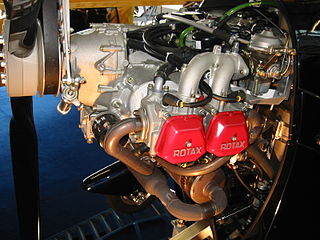
The Rotax 914 is a turbo-charged, four-stroke, four-cylinder, horizontally opposed aircraft engine with air-cooled cylinders and water-cooled cylinder heads. It is designed and built by the Austrian company BRP-Powertrain, owned by BRP, as part of its Rotax brand.

The Curtiss R-600 Challenger was an unusual six-cylinder, double-row, air-cooled, radial engine for aircraft use built in the United States in the late 1920s. It developed 180 hp (134 kW) at 2,000 rpm.
The Lawrance J-1 was an engine developed by Charles Lanier Lawrance and used in American aircraft in the early 1920s. It was a nine-cylinder, air-cooled radial design.

The Fiat A.54 was a seven-cylinder, air-cooled radial engine developed in Italy in the 1930s as a powerplant for aircraft. Amongst others, it powered the Ambrosini SAI.1 and SAI.2 racing aircraft.
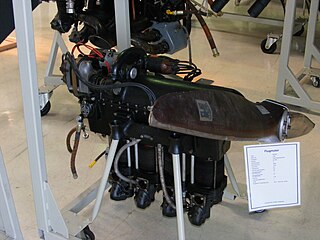
The Hirth HM 60 was a four-cylinder inverted air-cooled inline aircraft engine designed in 1923 and first sold in 1924. The engine was of very high quality, and its sales success contributed to Hirth's rapid pre-war expansion. It was a popular engine for light aircraft delivering 80 hp (60 kW) at 2,300 rpm. Later Hirth engines built upon the HM 60's success and provided greater power with many of the same design features.

The Kinner B-5 was a popular five cylinder American radial engine for light general and sport aircraft of the 1930s.

The Kinner R-5 is an American five cylinder radial engine for light general and sport aircraft of the 1930s.
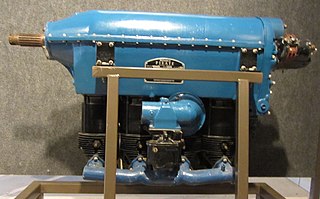
The Menasco Pirate series were four-cylinder, air-cooled, in-line, inverted aero-engines, built by the Menasco Motors Company of Burbank, California, for use in light general and sport aircraft during the 1930s and 1940s. The Menasco engines came in both normally aspirated and supercharged forms, with the supercharged models exhibiting superior performance at higher altitudes, with a relatively small increase in dimensions and weight. The supercharged models had the S suffix added to their designation to show supercharging.
The Welch OW-5M were a family of American two-seat light cabin monoplanes designed by Orin Welch based on his first cabin monoplane design, the ACA Falcon. Welch's goal was to design cheap and functional light aircraft. The aircraft is a strut-braced high-wing monoplane with an enclosed cabin with side-by-side seats for two. It is similar in appearance to the Aeronca C-3, save for the wing struts. It had a steerable tailwheel landing gear and a nose-mounted engine. The fuselage was constructed with fabric covered welded steel tubing with a triangular cross section. The controls were mounted overhead with an adjustable control wheel that could be positioned for either pilot. Welch developed their own low-pressure wheels and tires for suspension.
The Continental IO-346 engine is a fuel-injected four-cylinder aircraft engine that was developed especially for the Beechcraft Musketeer Custom III by Continental Motors. It was produced for that aircraft between 1965 and 1969.
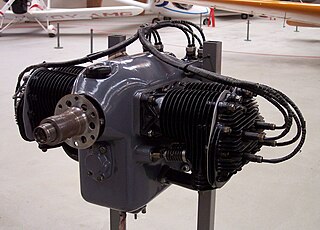
The Continental A40 engine is a carbureted four-cylinder, horizontally opposed, air-cooled aircraft engine that was developed especially for use in light aircraft by Continental Motors. It was produced between 1931 and 1941.
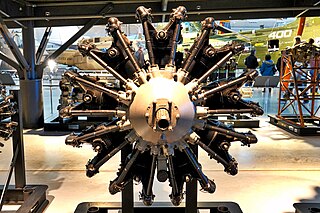
The Lycoming R-680 is a nine-cylinder air-cooled radial engine, the first aero engine produced by Lycoming. The engine was produced in two types, the E and B series; both are essentially the same. The B4E was available in a trainer version with a front exhaust collector "ring" for use without cylinder air baffles. R-680 received Approved Type Certificate No. 42 on 4 Feb 1930.
The Avia M 332 is an air-cooled four-cylinder inverted inline engine. It was designed by Bohumil Šimůnek, of Motorlet Walter Aircraft Engines, as a more powerful replacement for the four-cylinder Walter Minor engine, going into production in 1958. Piston aircraft engine production was transferred from Walter to Avia in 1964, the engine becoming the Avia M 332.
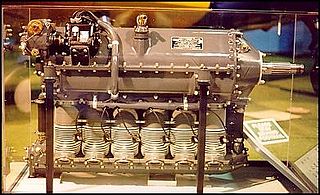
The Ranger L-440 are six-cylinder inline inverted air-cooled aero-engines produced by the Ranger Aircraft Engine Division of the Fairchild Engine and Airplane Corporation of Farmingdale, New York, United States. The engine was mainly produced for Fairchild's family of training aircraft in the mid-1930s.
The Hirth F-30 is a horizontally opposed four-cylinder, two-stroke, carburetted aircraft engine, with optional fuel injection, designed for use on ultralight aircraft and homebuilts.
The Shvetsov ASh-2 was a 28-cylinder, air-cooled, radial aircraft engine designed in the Soviet Union in the late 1940s. It was inferior to the Dobrynin VD-4K engine and did not enter production. One of the problems was air-cooling which ate up to 50% of the total engine power at 15000 meters. In contrast, the liquid-cooled VD-4K required only 5% of power for cooling at the same altitude.
The Franklin O-235 is an American air-cooled aircraft engine that first ran in the mid-1960s. The engine is of four-cylinder, horizontally-opposed layout and displaced 235 cu in (4 L). The power output is nominally 125 hp (93 kW).














